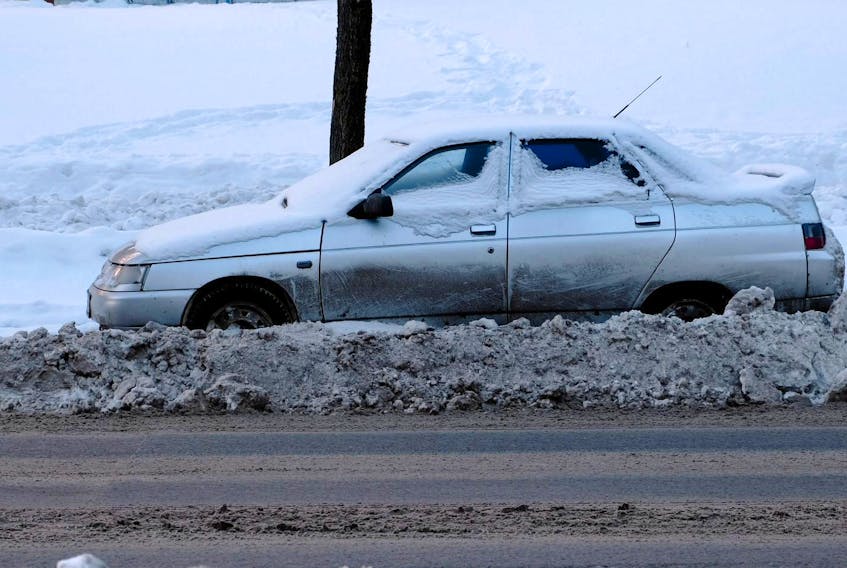The last time I did math because I had to, I was failing high school calculus, sitting at the kitchen table, fighting back tears and contemplating stabbing myself in the eyeball with a metal-tipped mechanical pencil.
Of all the things I’m not wired for, math smarts are at or near the top of the list.
That is, unless it’s useful math. This week, I’ve been crunching some numbers on that front.
It’s safe to say that winter is here. Let’s pretend that you’re driving in a remote location in the middle of a nasty snowstorm and you slide off the road. Or get stuck hopelessly in an empty parking lot in an empty town. Or you make a wrong turn and wind up trapped at the bottom of a hill on a dead-end road in the back country that’s too icy to escape. Or you have a flat tire, no spare and its 30 below.
All of the above have happened to your writer, which means that any of the above could also happen to you.
So you’re stranded, you’re not going anywhere, you have to wait for help, and probably, for a long time. It’s also mid February, so you’ll also need to stay warm. This means idling your vehicle’s engine for heat.
There’s just the one thing — how long can your engine idle before your gas tank is empty?
Turns out, this is actually a super easy thing to figure out.
Assuming you drive a modern vehicle with a fuel-injected engine (which is likely), you just need to know three things to figure out how long your engine can idle on the amount of fuel remaining in your tank.
THING 1
First, you need to know how many litres of fuel you have. This means finding out the size of your fuel tank, in litres, which is easily available on Google by searching year, make, model and then fuel tank capacity. It may also be listed in your owner’s manual.
You’ll also need to know where your fuel gauge is pointed. If you have a 60-litre tank and the needle is showing two thirds full, this means you have about 40 litres of gas. A 100-litre tank showing one quarter full has about 25 litres of gas. A 40-litre tank at about 50 per cent full has about 20 litres of gas in it.
THING 2
Next, you need to know the displacement of your engine, in litres. This is typically listed in the specifications page in the owner’s manual, or easily available online. Pop your hood and there’s a good chance the figure is displayed right on top of the engine. Maybe it says “3.3L V6” or “5.0L V8,” indicating a 3.3-litre engine, or a 5-litre engine, respectively.
THING 3
The final thing you need is to remember is the number 0.6. Write that down. It’s important.
The number 0.6 is the number of litres of fuel your engine burns per hour, per litre of displacement (as identified in THING 2), while its idling.
If you have a 3-litre engine (say, an Audi S4), than that engine uses (3 litres x 0.6) = 1.8 litres of fuel per hour while its idling.
If you have a 5.6-litre engine (like in a Nissan Titan), then that engine uses about (5.6 litres x 0.6) = 3.4 litres of fuel per hour, while idling.
Drive a new Honda Civic with the 1.5-litre engine? Idling uses just under 1 litre of fuel per hour. Got a Grand Cherokee SRT8 with the 6.4-litre HEMI V8?
This will use about 3.8 litres of fuel per hour while idling.
Just multiply the engine’s displacement, in litres, by 0.6, and you’ve found the volume of fuel (in litres) that engine uses while idling for a full hour. Then, divide the ball parked amount of fuel remaining in your tank by the figure above, to determine how long you can idle for.
In practice, if your vehicle has a 5-litre engine and a 100-litre fuel tank that’s one-third full, then you have about 30 litres of gas. As this engine uses about (5.0 litres x 0.6)= 3 litres of gas per hour to idle, then 30 litres of remaining fuel is good for about (30 litres / 3 litres per hour) = 10 hours of idling. With a fuller tank (say, 80 litres of fuel), you could idle, in this situation, for about 27 hours.
What about a Nissan Kicks (1.6-litre engine) stranded with about 20 litres of fuel in the tank? Easy peasy! This engine uses about (1.6 litres x 0.6) = 1 litre per hour to idle, meaning you’d be able to idle for about 20 hours on 20 litres of fuel.
Running a GMC Acadia (3.6-litre engine) with the empty light on while stranded? Let’s say the empty light means there’s only 9 litres of fuel in the tank.
As this engine uses (3.6 litres x 0.6) = 2.2 litres per hour while idling, nine litres of remaining fuel should provide about four hours of idling.
Remember, you may be able to cycle the engine on and off for heat, and running it half the time will, effectively, double the length of time it can idle for. This is also a good illustration of why it’s a great idea to keep your fuel tank topped up in the winter months.









